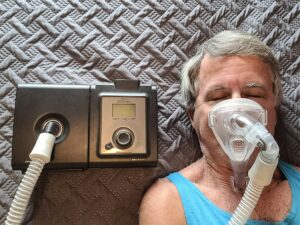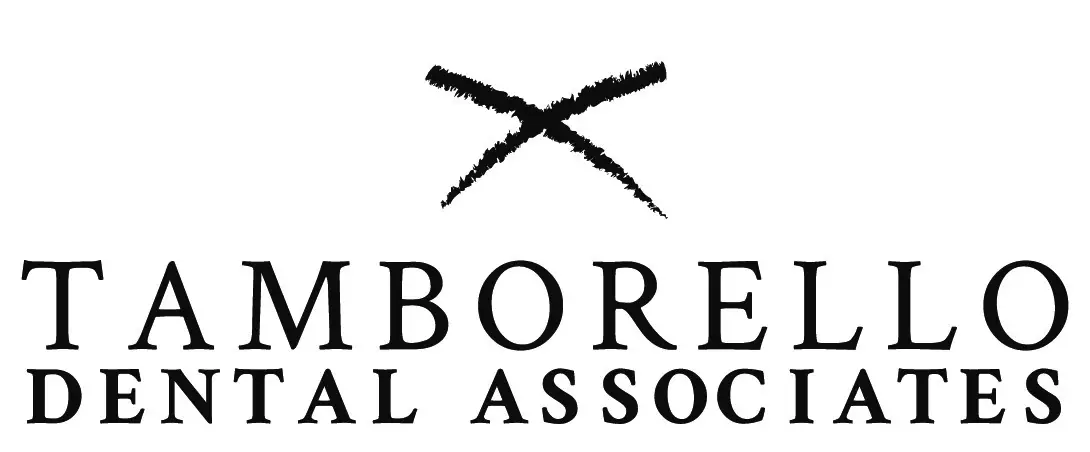Continuous Positive Airway Pressure (CPAP) is a standard treatment for sleep apnea. It's effective but not always the most comfortable or convenient solution.

For many, the search for an alternative to CPAP is driven by a desire for a more comfortable night's sleep. Others may seek a more travel-friendly option or explore all available treatments.
This article is meant to guide you through the various alternatives to CPAP. We'll explore options, from oral appliances and positional therapy to lifestyle changes and advanced technology.
We'll also explore the role of sleep centers and specialists in helping you find the right alternative and provide tips on monitoring and adjusting to your chosen treatment.
Whether you've been diagnosed with sleep apnea for the first time or have been managing it for years, this guide will help you navigate the world of CPAP alternatives. Let's embark on this journey to better sleep together.
Understanding CPAP and Its Discontents
CPAP therapy involves a machine that delivers a steady stream of air through a mask. This air pressure keeps the airway open, preventing the pauses in breathing characteristic of sleep apnea. It's a highly effective treatment, but it has its challenges.
For some, the mask can feel restrictive or uncomfortable, disrupting sleep. Others may experience dryness or irritation in the nose and throat due to the air pressure. Although the machine's noise is usually quiet, it can disturb some users or their bed partners.
Moreover, the need for a power source and the size of the machine can make it inconvenient for travel. Cleaning and maintaining the machine and mask also require time and effort. These factors can lead to low adherence, reducing the effectiveness of the treatment.
Despite these challenges, untreated sleep apnea can have serious health consequences. Therefore, if you're considering an alternative to CPAP, finding a solution that effectively manages your sleep apnea is crucial. The good news is that many options are available, as we'll explore in the following sections.
Oral Appliance Therapy: A Popular CPAP Alternative
Oral appliance therapy is a widely accepted alternative to CPAP. These devices, similar to mouthguards or orthodontic retainers, are worn during sleep. They reposition the lower jaw or tongue to keep the airway open.
There are two main types of oral appliances: Mandibular Advancement Devices (MADs) and Tongue Retaining Devices (TRDs). Both types have pros and cons, and their choice often depends on the individual's needs and preferences.
- MADs are more commonly used and have a wider range of adjustability.
- TRDs can be a good option for those who cannot tolerate a MAD or for whom a MAD is ineffective.
Mandibular Advancement Devices (MADs)
Mandibular Advancement Devices (MADs) are the most commonly used type of oral appliance. They work by moving the lower jaw forward, which helps to keep the airway open during sleep. This can significantly reduce the occurrence of apneas and hypopneas, leading to improved sleep quality.
While MADs can be effective, they may cause temporary side effects such as dry mouth, tooth discomfort, and jaw pain. However, these side effects often diminish as the user adjusts to the device.
Tongue Retaining Devices (TRDs)
Tongue-retaining devices (TRDs) work differently than MADs. Instead of moving the jaw, they hold the tongue forward to prevent it from falling back and blocking the airway during sleep. This can be particularly beneficial for individuals whose sleep apnea is primarily caused by tongue obstruction.
Like MADs, TRDs can cause temporary discomfort, including excessive salivation or dry mouth. However, many users find that these side effects decrease with continued use.
Positional Therapy: Tackling Sleep Apnea from a Different Angle
Positional therapy is another alternative to CPAP that can be particularly effective for individuals with positional sleep apnea. This condition is characterized by episodes of apnea that occur primarily when the individual sleeps in certain positions, most commonly on their back.
Positional therapy involves strategies to encourage sleeping in positions that minimize apnea episodes, such as on the side or stomach. This can be achieved through special pillows, body positioning devices, or even wearable devices that vibrate when the sleeper moves onto their back.
While positional therapy can be highly effective, it may only suit some. Discussing this option with a sleep specialist is essential to determine if it is a viable alternative to CPAP for your situation.
Lifestyle Changes: Weight Management and Sleep Hygiene
Lifestyle changes can significantly improve sleep apnea management. Weight management is one of the most impactful changes. Excess weight, particularly around the neck, can narrow the airway and contribute to sleep apnea.
A healthy diet and regular exercise can help achieve and maintain a healthy weight. Even a modest weight loss can significantly impact sleep apnea symptoms. However, it's important to approach weight loss under the guidance of a healthcare professional to ensure it's done safely and effectively.
Sleep hygiene is another crucial aspect of managing sleep apnea. Good sleep hygiene involves habits and practices that promote consistent, quality sleep. Some of these include:
- Maintaining a regular sleep schedule
- Creating a sleep-friendly environment
- Limiting exposure to screens before bedtime
- Avoiding caffeine and alcohol close to bedtime
While lifestyle changes alone may not fully manage sleep apnea, they can significantly improve the effectiveness of other treatments. As with any treatment plan, it's important to discuss these options with a healthcare provider to ensure they suit your needs.
Surgical Interventions: When to Consider and What's Involved
Some individuals may consider surgery as an alternative to CPAP. It's typically reserved for cases where other treatments have failed or are unsuitable. Surgery aims to remove or reduce obstructions in the airway that cause sleep apnea.
Several types of surgeries are available, each targeting a different part of the airway. These include:
- Uvulopalatopharyngoplasty (UPPP), which removes excess tissue in the throat
- Mandibular advancement surgery (MAS), which repositions the lower jaw to enlarge the upper airway
- Hypoglossal nerve stimulation, which uses a small device to stimulate the nerve controlling tongue movement
The effectiveness of surgery varies depending on the individual and the specific procedure. Some people may experience significant improvement, while others may see little to no change in their symptoms. It's also important to note that surgery carries risks and potential complications, such as pain, infection, and changes in voice or swallowing.
Before considering surgery, it's crucial to have a thorough discussion with a healthcare provider. They can provide detailed information about the potential benefits and risks and help determine if surgery is the right option. It's also recommended to seek a second opinion to ensure all options have been explored.
Advanced Technology: Adaptive Servo-Ventilation (ASV) and Hypoglossal Nerve Stimulation
Adaptive servo-ventilation (ASV) is a newer form of positive airway pressure therapy. It's designed for individuals with complex sleep apnea, a condition characterized by a combination of obstructive and central sleep apnea. ASV adjusts the pressure delivered based on the individual's breathing patterns.
ASV is effective in treating complex sleep apnea. However, it may only be suitable for some. Individuals with certain heart conditions, for example, should avoid ASV. As with any treatment, discussing the potential benefits and risks with a healthcare provider is crucial.
Another advanced treatment option is hypoglossal nerve stimulation, which involves implanting a small device under the skin. The device sends mild electrical pulses to the hypoglossal nerve, which controls tongue movement. This helps the chest. The device keeps the airway open during sleep.
Hypoglossal nerve stimulation is a relatively new treatment. While initial studies show promising results, more research is needed to understand its effectiveness and long-term outcomes fully. As with ASV, discussing this treatment option with a healthcare provider is important to determine if it's the right choice.
Travel-Friendly CPAP Alternatives
Traveling with a traditional CPAP machine can be cumbersome due to its size and the need for a power source. Fortunately, travel-friendly alternatives are available. Travel CPAP machines are compact and lightweight and often have battery options for added convenience.
Another portable option is an oral appliance, such as a Mandibular Advancement Device (MAD). These devices are small enough to fit in a pocket, making them ideal for frequent travelers. However, while these alternatives are more convenient for travel, they may not be as effective as a traditional CPAP machine for some individuals. Please always consult a healthcare provider before switching to a travel-friendly alternative.
The Role of Sleep Centers and Specialists in Finding Alternatives
Sleep centers and specialists play a crucial role in finding alternatives to CPAP. They conduct comprehensive sleep studies to understand the severity and type of sleep apnea a patient has. This information is vital in determining the most effective treatment option.
Moreover, sleep specialists can provide personalized recommendations based on a patient's needs and preferences. They can guide patients through adjusting to a new treatment, monitor progress, and make necessary modifications. Therefore, keeping open communication with your sleep specialist when considering alternatives to CPAP is essential.
Monitoring and Adjusting to Alternative Treatments
Switching to an alternative treatment requires careful monitoring and adjustment. You must track your symptoms, sleep quality, and any side effects you may experience. This data can help your healthcare provider assess the treatment's effectiveness and make necessary adjustments.
Remember, finding the right alternative to CPAP often involves trial and error. It's crucial to be persistent. Remember to be patient and that the goal is to improve your sleep quality and overall health. Therefore, regular follow-ups with your healthcare provider are essential to ensure the treatment works effectively.
Conclusion: Embracing the Journey to Better Sleep
In conclusion, finding an alternative to CPAP is a personal journey that requires patience, persistence, and open communication with your healthcare provider. Remember, the ultimate goal is to improve your sleep quality and overall health. Embrace the journey and look forward to better, more restful nights ahead.
Houston Sleep Associates: Exploring Alternatives to CPAP
Please get in touch with Houston Sleep Associates for a consultation about an oral appliance therapy device. This will help you and your partner sleep better. 281.378.4Zzz (4999).
Other Related Sleep Apnea Articles:
1. How to Keep My Airway Open without a CPAP Machine? (houstonsleepassociates.com)
2. Oral Appliance Therapy to Stabilize Airway in Respiratory Care (houstonsleepassociates.com)
3. Do mouth pieces work for sleep apnea? - Houston Sleep Associates
4. Improving Quality of Rest: The Benefits of Oral Appliances (houstonsleepassociates.com)
5. Improving Sleep Apnea: The Best Sleeping Position Revealed (houstonsleepassociates.com)
6. Understanding the Science Behind Sleep Apnea Mouth Guards (houstonsleepassociates.com)
7. Treatment Options for Sleep Apnea (houstonsleepassociates.com)

